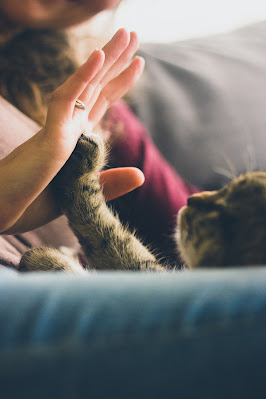Cats and Aggression
Understanding your cat can support you both to understand aggression and work with your cat to prevent situations where the cat may become aggressive. Neutering males before they reach maturity is definitely a must in lowering aggression.
What Triggers Aggression
A real difference between play aggressions is a normal behavior in kittens over about five weeks of age as they become independent hunters and work towards being able to exist on their own in the world and aggression that will be problematic. In domestic cats, this stage of aggression in development however occurs, even though your cat will ne'er have to hunt its own dinner.
In addition to the play aggression stage, at about the age of 14 weeks, kittens will start to learn about social fighting, which is once more a survival of the fittest learning skill that will determine which males will successfully mate with females, passing on their physical characteristics.
A kitten that is involved in either play social fighting or play hunting aggression will hide or couch down, leap out at you and swat at your feet or ankles or bite, then immediately runoff. If not stopped this behavior will continue to escalate over time until it present an acute problem with a full-grown cat striking your feet when you walk past.
Aggression can be triggered by specific situations that may occur in the home. In their wild state cats respond to sudden noises and feeling trapped or cornered in one of two ways - fight or flight. In most cases a cat will run away if they feel threatened, however, if they can't escape, they will resort to aggression. Typically this type of aggression can be avoided by simply stepping away and giving the cat time and space to become comfortable again.
Ultimately, some cats are honorable more aggressive by nature. These may be cats that have been mistreated, feral cats that have only partially tamed or domesticated after they matured, cats that have an illness or injury, or those that need to feel that they are the "top cat." This behavior is known as status-related aggression and can cause fatal injury to people, other pets, and even other cats in the house.
Signs and Signals of Aggression
Cats sometimes seem to be truly bipolar in their behavior. One second they may be sitting contentedly on your lap and purring and the next second they have your thumb between their teeth and their claws firmly lodged in your leg. This type of instantaneous change from calm to aggressive is more likely in the status-related aggression, where the cat is enabling you to know he or she is the boss.
For most cats, the signs and signals of aggression include their body movements, vocalizations, and general behavior. As mentioned above most cats will try to get away from trouble, not actively pick a fight with another animal or a person. If a cat feels trapped or cornered, watch for signs of the ears pulled back along with the head, hissing and spitting, widely dilated pupils, arched back, and the tail standing straight up and bushed out like an old fashioned bottle brush.
Cats may also indicate dissatisfaction and potentially aggressive behavior by their tail movements. A gently swaying tail tends to indicate a happy, relaxed and contented cat whereas a wild twitching or just the tip of the tail jerking back and forth will indicate that the cat has had enough of whatever is going on. Purring cats that suddenly stop purring or switch from purring to a more high-pitched vocalization like a growling or yowling sound may also be indicating that they care about at the end of their tolerance range. A content purr is a very deep, rumbling sound that appears to be coming from their chest or the center of their body, a growl or hiss of displeasure is from the back of the throat.
Aggression towards other cats or animals is remarkably similar to aggression from being startled. The cat will try to arch his or her back, puff out their hair and look as ferocious as possible to hopefully get the other cat or animal to back down and go away. Once cats move into the attack mode cat aggression can be very damaging and it is not a clever idea to stick your hands in between two fighting cats or a cat and a dog. If at all possible distract the animals with a deafening noise or a spray of water and then move between them. Placing your hands on or between animals that are fighting each other is a potential risk that can result in very serious injuries, even though the animals would never hurt you under normal conditions.
Correcting Aggressive Behavior
Kittens learn from playing with their mothers and littermates that if they are too rough they will be corrected, or they will be departed from without anyone to play with. Correcting aggressive behavior with kittens, even as a human, needs to follow those same rules. When a kitten first starts to indicate any aggressive type of play, simply stop playing. You may also want to indicate a sharp "Ouch" or "No"











0 Comments
Spams Denied! Ask and Discuss healthy things